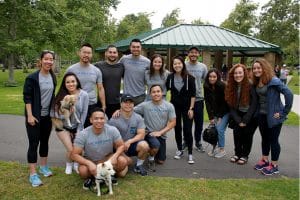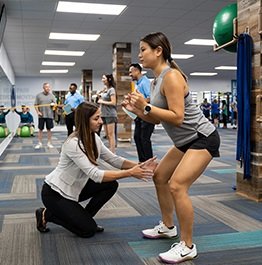
Stick Your Landing: The 101 on Ankle Instability in Gymnastics
May 24, 2016One of the most common issues in gymnastics is joint laxity (instability) of the ankle joints leading to chronic ankle sprains.
For a variety of reasons, gymnasts develop very hypermobile ankle joints, along with large muscle imbalances, and associated laxity of the surrounding ankle joint structures. This can lead to a variety of repeated injuries with one of them being reoccurring ankle sprains.
Although inversion sprains (e.g. falling to the outside of the foot, rolling the foot inward) are the most common, many other injuries can possibly develop from hypermobility and a lack of ankle stability such as stress fractures, bone bruising, anterior ankle impingement pain, and various arch related problems.
The most familiar scenario many gymnasts can relate to is when he/she is supposed to have amazing balance while landing an incredible dismount, then roll their ankle walking off the mat leading to an ankle injury. Also, many athletes can be seen rolling out their ankles when walking around the gym or during a warm up, which may be doing more harm than good.
Poor Ankle Stability
Some research states the relationship between neuromuscular control and why ankle instability may occur. Neuromuscular control is a term used to describe the interactions of nerves and muscles, and how they communicate with each other to control structures of the body during movement.
Additional terms that can be used to describe this relationship are as follows:
Sensory Input and Sensory Receptors:
Refers to the information that muscles and joints send back to the brain through multiple nerve pathways, gathering information about the body to understand what the body is doing in space. Different types of receptors send different information – such as muscle length, pain, temperature and pressure.
Motor Output and Muscular Activation:
Refers to the information that the brain sends back to the muscles of the body to initiate and continue movement. The brain is constantly sending signals to muscles and joints of the body about how to move and keep the body safe within the surrounding environment, based upon the incoming signals from the body.
Functional Joint Stabilization:
Refers to the equal balance of strength and flexibility of muscles around a joint and proper neuromuscular control, working together to help keep the joint stable. The body relies on the constant flow of sensory information in and muscle activation out to functional properly during movement.
Proprioception:
The most important concept to understand – refers to the brain’s ability to know where different body parts are in space. The more an athlete trains on higher level of balance and proprioception based exercises, the nervous system comes more efficient at sending nerve signals, receiving nerve signals and handling complex movements, especially the ones that occur in the sport of gymnastics.
In summary, based on the incoming sensory input, the brain interprets what each part of the body is doing during a specific movement, then sends outgoing information through nerves to muscles to make sure that the body’s joints are balanced and stable during activities.
Contributing Factors:
Gymnastics requires an incredible amount of balance and functional joint stability to deal with high forces and quick movements.
This involves the athlete having really good proprioceptive sense to meet the demands of the sport. If one of the areas noted above are lacking, the gymnast will have an increase risk of ankle injury during performance.
Additional contributing factors to injury are:
- Creating high forces at high velocities during tumbling skills
- Toe point (plantarflexion) leading to excessive joint mobility
- Psychological and neuromuscular fatigue during prolong practice(s)
- Repetitive performance on pain causing joint damage
- History of ankle injuries
When an ankle joint loses stability and its capability to tolerate high forces, problems may arise.
Athletes participating in high level sports, like gymnastics, may be at great risk of ankle sprains when they do not practice ankle balance/stability exercises regularly.
Are you suffering from ankle instability? Physical therapy can help.
Sign up for a FREE Assessment with CBPT!
Reader Interactions
Leave a comment
You must be logged in to post a comment.






